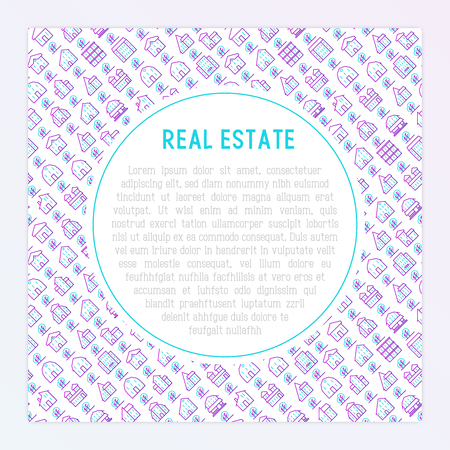1. What Is Cap Rate and Why It Matters
When youre considering investing in rental properties, one of the most important numbers youll come across is the Capitalization Rate, commonly known as the Cap Rate. This metric helps you understand how much return you might expect from a property, based solely on its income potential. Whether youre a first-time investor or looking to grow your real estate portfolio, knowing how to calculate and interpret the Cap Rate is essential.
What Is Cap Rate?
The Cap Rate is a percentage that represents the annual return on investment (ROI) you can expect from an income-producing property, assuming you buy it with cash—no mortgage involved. Its a quick way to evaluate whether a property is worth your money compared to others in the market.
Cap Rate Formula:
The formula is pretty straightforward:
| Formula |
|---|
| Cap Rate = Net Operating Income (NOI) ÷ Property Purchase Price |
Net Operating Income (NOI) is the annual income generated by the property after subtracting all operating expenses (like property management fees, taxes, insurance, and maintenance), but before mortgage payments.
Example Calculation:
| Description | Amount |
|---|---|
| Annual Rental Income | $24,000 |
| Operating Expenses (taxes, insurance, etc.) | $6,000 |
| Net Operating Income (NOI) | $18,000 |
| Purchase Price of Property | $300,000 |
| Cap Rate = $18,000 ÷ $300,000 | 6% |
Why Cap Rate Matters in Real Estate Investing
The Cap Rate helps investors compare different properties regardless of their price or location. A higher Cap Rate usually means better cash flow potential—but it could also mean higher risk. A lower Cap Rate might suggest a more stable investment, but with lower returns.
- High Cap Rates (8%+): Often found in up-and-coming or riskier neighborhoods.
- Moderate Cap Rates (5%-7%): Common in balanced markets with decent growth and stability.
- Low Cap Rates (below 5%): Typically seen in high-demand areas with strong long-term appreciation potential.
Understanding the Cap Rate allows you to make smarter decisions about where and what type of rental property to invest in. Its just one piece of the puzzle—but an important one when evaluating potential deals.
2. Understanding ROI in Real Estate
When youre thinking about investing in rental properties, one of the most important things to understand is Return on Investment, or ROI. ROI helps you figure out how profitable your rental property really is. In simple terms, it shows you how much money youre making compared to what youve spent.
What Is ROI?
ROI is a percentage that tells you how much profit youve made (or expect to make) from an investment, relative to the amount of money you put into it. The higher the ROI, the better your investment is performing.
Basic ROI Formula
The most straightforward way to calculate ROI for a rental property is:
ROI = (Net Profit / Total Investment) × 100
Net Profit is the income you earn from rent minus all your expenses like mortgage, property taxes, insurance, maintenance, and management fees.
Example of Basic ROI Calculation
| Item | Amount |
|---|---|
| Total Investment (Down payment + Closing Costs + Renovations) | $50,000 |
| Annual Rental Income | $18,000 |
| Annual Expenses (mortgage, taxes, etc.) | $10,000 |
| Net Profit (Income – Expenses) | $8,000 |
| ROI = ($8,000 / $50,000) × 100 | 16% |
Other Ways to Calculate ROI in Rental Properties
1. Cash-on-Cash Return
This method compares your annual pre-tax cash flow to the actual cash you invested. Its great for investors who use financing rather than paying all cash.
Formula:
Cash-on-Cash Return = (Annual Cash Flow / Total Cash Invested) × 100
2. ROI with Appreciation and Equity Build-Up
If youre holding the property long-term, dont forget about appreciation (increase in property value) and equity built by paying down your loan. These can significantly boost your overall returns over time.
3. ROI Including Tax Benefits
You may also want to factor in tax savings from deductions like mortgage interest, depreciation, and other property-related expenses. These benefits can improve your real-world ROI even if they don’t show up directly in cash flow.
Why ROI Matters for Rental Investors
ROI helps you compare one investment property to another or evaluate whether your current rental is meeting your financial goals. Its a must-know metric whether youre just starting out or scaling up your portfolio.
Things That Can Affect Your ROI
- Vacancy rates: More vacancies mean less income.
- Unexpected repairs: Big maintenance issues can eat into profits fast.
- Property management costs: If youre hiring help, that reduces net profit.
- Financing terms: Interest rates and loan structures impact monthly expenses.
The key takeaway here is that understanding ROI helps you make smarter investment decisions by showing you how well your money is working for you in a rental property.

3. Cap Rate vs ROI: Key Differences and When to Use Each
When investing in rental properties, two of the most commonly used metrics are Cap Rate (Capitalization Rate) and ROI (Return on Investment). While both help evaluate a propertys profitability, they serve different purposes and offer unique insights. Understanding how these metrics differ can help you make more informed investment decisions.
What Is Cap Rate?
The Cap Rate measures the annual return on a property based on its net operating income (NOI) and current market value or purchase price. Its a quick way to estimate the propertys potential return without considering financing or taxes.
Cap Rate Formula:
Cap Rate = (Net Operating Income ÷ Property Value) × 100%
What Is ROI?
ROI calculates the total return on your actual cash investment. It includes all costs such as down payment, loan interest, closing costs, repairs, and any other expenses. ROI gives you a clearer picture of your profit based on what youve actually spent.
ROI Formula:
ROI = (Annual Profit ÷ Total Cash Invested) × 100%
Main Differences Between Cap Rate and ROI
| Feature | Cap Rate | ROI |
|---|---|---|
| Focus | Property performance | Your personal investment return |
| Includes Financing? | No | Yes |
| Used For | Comparing properties | Evaluating overall deal profitability |
| Simplicity | Simpler – uses just NOI and price | More detailed – factors in all costs |
| Main Use Case | Market analysis & property screening | Personal financial planning & deal evaluation |
When to Use Cap Rate vs ROI
Use Cap Rate When:
- You want to quickly compare multiple properties in the same area.
- You’re analyzing a property’s performance regardless of how it’s financed.
- You need to assess market trends or average returns in a neighborhood.
Use ROI When:
- You want to understand how much profit youre making based on your actual cash outlay.
- You’re evaluating whether a specific deal meets your financial goals.
- You’re comparing different financing strategies for the same property.
In short, use the cap rate for quick comparisons and market-level evaluations, while ROI is best when youre crunching numbers for your own investment strategy. Both are valuable—just in different parts of the decision-making process.
4. Factors That Impact Cap Rate and ROI
When investing in rental properties, understanding what influences your Cap Rate and ROI can help you make smarter financial decisions. These metrics are not fixed—theyre affected by both external market conditions and internal property-specific factors. Let’s break them down into key categories.
External Factors
Location
The old saying “location, location, location” holds true for real estate investing. Properties in high-demand areas typically have lower Cap Rates due to higher purchase prices, but they may still offer strong ROI thanks to consistent rental income and property appreciation. On the other hand, properties in less desirable areas may have higher Cap Rates but come with increased risk or maintenance costs.
Market Trends
Real estate markets fluctuate based on economic conditions, interest rates, job growth, and housing supply and demand. For example, during a booming economy, rents may rise—boosting your ROI—while property values might also increase, affecting your Cap Rate. Understanding local market trends can help you time your investment for better returns.
Internal Factors
Property Condition
A well-maintained or newly renovated property tends to attract better tenants and command higher rents, improving both Cap Rate and ROI. However, if you buy a fixer-upper at a lower price and successfully renovate it without overspending, you could potentially achieve an even higher ROI.
Financing Structure
Your method of financing plays a major role in ROI. While Cap Rate calculations usually assume all-cash purchases (ignoring loan costs), ROI takes financing into account. A mortgage with favorable terms can boost your returns through leverage, but it also adds risk if the rental income doesn’t cover monthly payments.
Comparison Table: External vs Internal Factors
| Factor Type | Example Factors | Impact on Cap Rate | Impact on ROI |
|---|---|---|---|
| External | Location | High-demand areas = Lower Cap Rate | Can improve long-term ROI due to appreciation |
| External | Market Trends | Rising prices = Lower Cap Rate | Growing rents = Higher ROI |
| Internal | Property Condition | Better condition = Higher rent potential = Better Cap Rate | Lowers maintenance cost = Higher ROI |
| Internal | Financing Terms | No direct effect (Cap Rate assumes cash deal) | Affects cash flow & leverage = Big impact on ROI |
Key Takeaway
No two rental investments are exactly alike because so many variables play a role in shaping their financial performance. As an investor, keeping a close eye on both external trends and internal property details will help you better estimate your Cap Rate and ROI—and ultimately lead to more informed investment decisions.
5. Real-Life Examples and Case Studies
To better understand how Cap Rate and ROI work in real estate investing, let’s walk through a couple of simple, real-world examples. These scenarios will help you see how to calculate these metrics and what they can tell you about an investment propertys performance.
Example 1: Single-Family Rental Property
Imagine you’re considering purchasing a single-family home in Texas as a rental property. Here are the basic numbers:
| Purchase Price | $200,000 |
|---|---|
| Annual Rental Income | $18,000 |
| Operating Expenses (taxes, insurance, maintenance) | $4,000 |
Cap Rate Calculation:
The formula for Cap Rate is:
Cap Rate = (Net Operating Income ÷ Purchase Price) × 100
Net Operating Income (NOI) = $18,000 – $4,000 = $14,000
Cap Rate = ($14,000 ÷ $200,000) × 100 = 7%
This means your Cap Rate is 7%, which gives you an idea of how profitable this property could be compared to others in the market.
ROI Calculation (Assuming Mortgage Financing):
If you put down 20% ($40,000) and finance the rest with a mortgage, and your annual mortgage payments total $9,600:
| Total Annual Cash Flow | $14,000 – $9,600 = $4,400 |
|---|
ROI = (Annual Cash Flow ÷ Total Cash Invested) × 100
Total Cash Invested = Down Payment + Closing Costs ($40,000 + $5,000 = $45,000)
ROI = ($4,400 ÷ $45,000) × 100 ≈ 9.8%
This ROI tells you how much return youre getting on the actual cash youve invested—not just the property price.
Example 2: Small Multi-Family Property
You’re looking at a duplex that costs $350,000 in Ohio. Each unit rents for $1,200/month.
| Total Monthly Rent | $2,400 |
|---|---|
| Total Annual Rent Income | $28,800 |
| Total Operating Expenses (including property management) | $8,800 |
Cap Rate Calculation:
Noi = $28,800 – $8,800 = $20,000
Cap Rate = ($20,000 ÷ $350,000) × 100 ≈ 5.7%
If You Paid All Cash:
| Total Investment | $350,000 |
|---|---|
| Cumulative ROI (First Year) | ($20,000 ÷ $350,000) × 100 ≈ 5.7% |
What Investors Can Learn from These Metrics
- A higher Cap Rate typically signals a better income return relative to property cost—but may come with higher risk or less desirable locations.
- A strong ROI helps investors measure actual profit after accounting for financing and out-of-pocket costs.
The Takeaway
Simplified examples like these show how Cap Rate and ROI give you different but complementary insights. While Cap Rate focuses on property value vs. income potential without financing taken into account, ROI helps you understand your real returns based on actual money spent. Smart investors use both metrics together to make informed decisions when evaluating rental properties.


